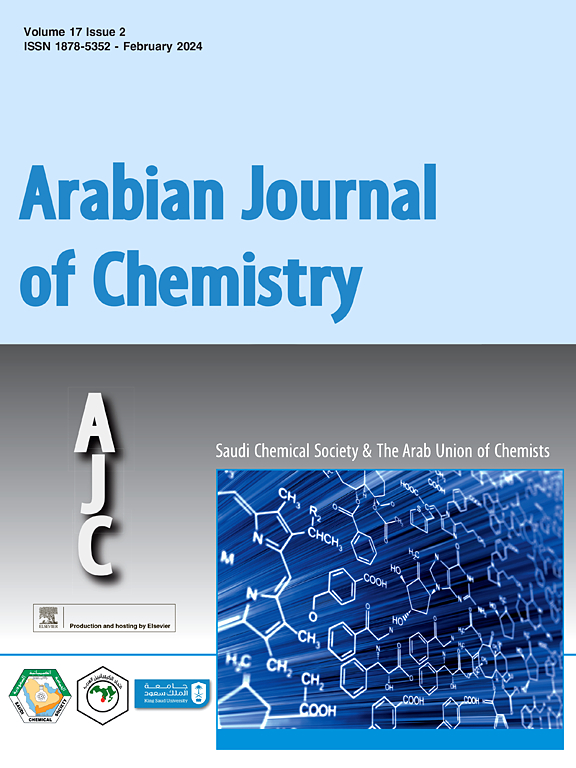Variations in metabolites content and bioactivity to regulate biomarkers of benign prostatic hyperplasia according to the growth stages of Sida rhombifolia
IF 5.2
2区 化学
Q2 CHEMISTRY, MULTIDISCIPLINARY
引用次数: 0
Abstract
It has been reported that the secondary metabolites produced by plants are influenced by genetic diversity and growth conditions, resulting in significant variations in chemical content even within the same species. In the previous study searching for bioactive materials from plants to improve benign prostatic hyperplasia (BPH), it was found that the methanolic extract of Sida rhombifolia in the family of Malvaceae exhibited the excellent inhibition on the expressions of 5-alpha reductase type 2 (5αR2) and androgen receptor (AR) in human prostate cells. In this study, we aimed to evaluate the change in the contents of major components of S. rhombifolia and the activity of improving BPH according to the growth stages of S. rhombifolia. Plant growth characteristics including plant height, stem diameter, leaf length, leaf width, and number of leaves were examined at intervals of approximately 15 days for 51 days. The contents of 20-Hydroxyecdysone and α-Ecdysone, the main constituents contained in S. rhombifolia on each day after transplantation (DAT) were analyzed using LC-ESI-MS/MS. The inhibitory activities of S. rhombifolia stems or leaves at each DAT on the expressions of AR, 5αR2, proliferating cell nuclear antigen (PCNA) and prostate specific antigen (PSA), were evaluated in human originated prostate cells, RWPE-1 and LNCaP cells activated by Testosterone propionate (TP). Considering the yield of the raw materials, the contents of metabolites, and the bioactivities, it was suggested that the appropriate collection period for S. rhombifolia as a bioactive material to improve BPH might be after 90 DAT.
代谢产物含量和生物活性的变化对良性前列腺增生生物标志物的调节作用
据报道,植物产生的次生代谢物受遗传多样性和生长条件的影响,导致即使在同一物种内,化学成分也存在显著差异。在前期从植物中寻找改善良性前列腺增生(BPH)的生物活性物质的研究中,发现Malvaceae科的石竹醇提物对人前列腺细胞中5- α还原酶2型(5αR2)和雄激素受体(AR)的表达具有良好的抑制作用。在本研究中,我们的目的是根据不同的生长阶段,评估白桦主要成分含量的变化和改善BPH的活性。植株的生长特征包括株高、茎粗、叶长、叶宽和叶数,每隔15天检测一次,共检测51天。采用LC-ESI-MS/MS分析了移植后各天白桦主要成分20-羟基蜕皮激素和α-蜕皮激素的含量。在人源性前列腺细胞、RWPE-1细胞和经丙酸睾酮(TP)激活的LNCaP细胞中,研究了白双兰茎叶在各时间点对AR、5αR2、增殖细胞核抗原(PCNA)和前列腺特异性抗原(PSA)表达的抑制作用。综合考虑原料收率、代谢物含量和生物活性等因素,认为黄双歧杆菌作为改善BPH的生物活性物质的适宜采收期为90dat后。
本文章由计算机程序翻译,如有差异,请以英文原文为准。
求助全文
约1分钟内获得全文
求助全文
来源期刊

Arabian Journal of Chemistry
CHEMISTRY, MULTIDISCIPLINARY-
CiteScore
10.80
自引率
3.30%
发文量
763
审稿时长
63 days
期刊介绍:
The Arabian Journal of Chemistry is an English language, peer-reviewed scholarly publication in the area of chemistry. The Arabian Journal of Chemistry publishes original papers, reviews and short reports on, but not limited to: inorganic, physical, organic, analytical and biochemistry.
The Arabian Journal of Chemistry is issued by the Arab Union of Chemists and is published by King Saud University together with the Saudi Chemical Society in collaboration with Elsevier and is edited by an international group of eminent researchers.
 求助内容:
求助内容: 应助结果提醒方式:
应助结果提醒方式:


